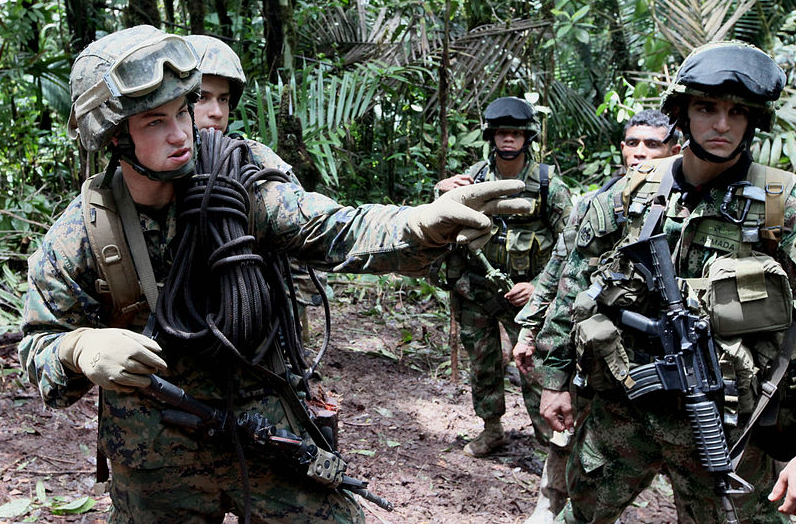Article by PBI-Canada

Peace Brigades International-Canada will be participating in the World Beyond War-organized War and the Environment online course that takes place from July 6 to August 16.
This course is now at capacity with 125 students registered for it.
PBI-Canada will be facilitating Week 2 of this course from July 13 to 19 that will address the question: What do wars do to the Earth?
There are numerous ways in which wars harm the Earth including:
1– the consumption of large quantities of fuel by jeeps, helicopters and other war machines, leading to increased CO2 emissions and worsening climate change;
2– troop and vehicle movements can damage sensitive landscapes and geodiversity;
3– attacks on infrastructure including oil pipelines can contaminate the soil, rivers and aquifers;
4– the displacement of people can result in deforestation given their need for firewood, the movement of livestock through sensitive ecosystems, and overburdened wastewater systems and waste management systems;
5– resource extraction to finance conflict can mean environmental damage and degradation.
If we were to look specifically at the 50-year long war in Colombia, some of the key environmental impacts include:
1– the loss of 3 million hectares of forest (an area the size of Belgium), 1.3 billion additional tonnes of CO2 emissions, the degradation of 1.5 million hectares of land;
2– 4.1 million barrels of oil spilling into the soil and water from attacks on oil pipelines; illegal gold mines also resulted in mercury, chemical, and sediment pollution; the oil spills and mining have put 60% of the country’s water sources at risk;
3– the displacement of more than 7 million people has brought human tragedy plus an intensification of urbanization and with that the environmental harms of air pollution, overburdened sanitation and waste management systems;
4– more than 1.75 million hectares of territory were sprayed with the carcinogenic herbicide glyphosate by the Colombian government between 1994 and 2014 in an effort to eradicate the cash crops financing the guerilla insurgency;
5– In 2016, Colombia’s planning department calculated that for every year of peace the country would save US$2.2 billion by avoiding the costs of the environmental degradation and pollution linked to the conflict.
And now in the “post-conflict” situation, the Washington-based Environmental Law Institute has noted: “While guerrillas and warfare damaged the environment, their presence also prevented the exploitation of large natural areas. After decades of war, [there are now] fewer disincentives for converting land from native ecosystems for agricultural uses, energy infrastructure, and other extractive activities.”
Further to this, the University of California reported in April of this year that deforestation has surged after the war noting: “According to the Nature Conservancy, four square miles of rainforest can contain 1,500 flowering plants, 25,000 species of trees, 400 species of birds and 150 species of butterflies.”
For an overview on how the environment is damaged prior, during and after war, please see this Conflict and Environment Observatory article.
Photo: U.S. Marine Corps corporal instructs his squad where to cross a river while training with Colombian marines on jungle warfare in Colombia in 2010.

